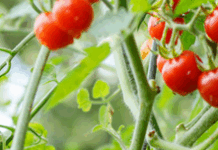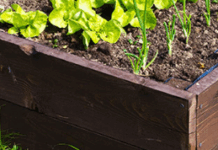Irrigation systems are commonly used both in agricultural production and landscape management and can be more efficient than traditional watering methods, but only if the system is properly operated and managed, said Kansas State University associate professor of landscape management Cathie Lavis.
According to the “Growing Growers Drip Irrigation Basics” publication co-authored by Lavis and K-State assistant professor Cary Rivard, drip irrigation is beneficial because it can optimize plant growth while reducing water consumption and limit the spread of soil-borne pathogens. However, irrigation lines must be inspected regularly for leaks and water sources should be filtered to avoid clogging the system.
A drip irrigation system consists of four main components: a source of pressurized and filtered water, an infrastructure to deliver water, a header line to distribute water, and a drip tape or tube.
When designing a drip irrigation system, the owner needs to determine whether he or she needs a high- or low-pressure drip system based on the need for the water supply, the amount of area to be covered and budget.
Low-pressure drip systems, according to the publication, are most commonly used with annual vegetable production and use drip tape and other less expensive components that need to be replaced every one or two years. High-pressure drip systems are generally used with high tunnels or permanent beds, use drip tubing and are more expensive than low-pressure systems; however, they tend to be more durable. Additionally, high-pressure systems need to be shorter to ensure pressure levels are maintained.
Soil moisture levels should be monitored daily to ensure proper growing conditions are being maintained and can be checked with a tensiometer, soil moisture sensors, a soil probe or by hand.
Pressure and flow
Two of the most important data points to know when designing an irrigation system are flow rate and available pressure, according to Lavis.
“Without those pieces of information, you cannot select the proper pipe or the proper components,” she said. “It all comes down to efficiency. Understanding the relationship between pressure and flow is crucial to proper system design.”
To determine how much water a system is applying, whether using a hose-end sprinkler or an in-ground irrigation system, Lavis suggested setting out small catch devices for a specific amount of time. Knowing the amount of water applied per unit of time will help determine how long to run the sprinkler or a particular irrigation zone more efficiently than guessing runtimes.
For a drip irrigation system, she said, total water usage can be calculated by using manufacturer information of drip tape or tubing to determine flow rate and then multiplying the flow rate by the amount of time the system ran.
To determine available pressure, Lavis said to use a water pressure gauge on an outdoor water faucet. Be sure there is no water running in the house – such as a dishwasher – while taking the reading. Turn the faucet on fully, and the gauge will read out the pounds per square inch, or psi.
A typical residential water supply has approximately 60 psi, she said, and if a person has a 5/8 water meter, he or she may have approximately 10 gallons per minute available. This is only one example, and Lavis recommends seeking the expertise of an extension specialist to learn more.
In-ground irrigation systems and water usage
Homeowners should understand how to operate or adjust their irrigation system, Lavis said, because previous research has indicated that homeowners with an IGS tend to water more routinely and overwater more than homeowners without an IGS. Homeowners with an IGS also tend to water the same amount each time, rather than adjusting the watering amounts based on the dryness of the lawn or season of the year.
According to the study, 65 to 83 percent of surveyed homeowners also did not know how much water they applied with their irrigation system. That indicates a need both for more homeowner education about water usage and the importance of investing in more efficient systems, as well as the continued development of components to make irrigation systems more efficient, Lavis said.
“If you add on a few components that cost more money for the system up front, it’s a lot easier for someone to slide in and offer a cheap irrigation system without these,” Lavis said. “And a lot of times, people go with the less expensive option, because they don’t realize that in the long run, they could be saving money by adding water-efficient components. It all boils down to education; we as professionals have to educate our homeowners.”
Hiring a reputable contractor
If a homeowner or vegetable grower is not knowledgeable about the components of an irrigation system and how they work together, Lavis said she recommends hiring a contractor who can demonstrate credibility.
“If we want to try to get anything across at all, it’s working with reputable people,” Lavis said. “You go with quality – someone who knows what they’re talking about and takes the time to educate you.”
A publication titled “How to Hire an Irrigation Contractor” authored by Lavis suggests asking about references, related certifications and licensing, and requesting a written proposal and copy of the irrigation plan to ensure a prospective contractor is well qualified.
The guide also recommends asking specific questions about various sensors and controllers to manage water output, system efficiency, customer service, system maintenance and required conditions of a contract.
“Homeowners don’t have to know answers to everything; they just have to know the questions,” Lavis said. “It’s just like when you go to buy a new car, you’re not just going to walk into one dealership, see what they have and buy it – you do your homework.”
More information is available through Horticulture, Forestry and Recreation Resources Extension or by visiting a local K-State Research and Extension office.




